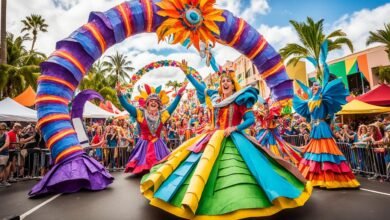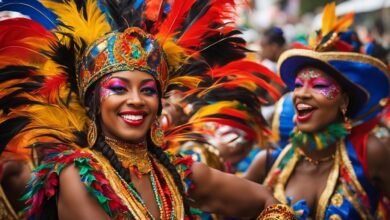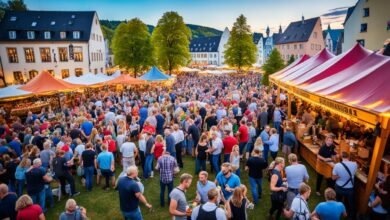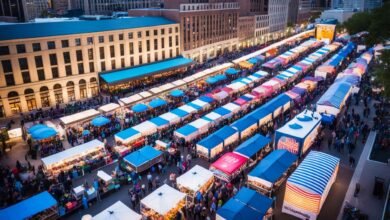Table of Contents
The Carnival of Venice, “Carnevale di Venezia“, stands as one of the most iconic and celebrated festivals in the world. Each year, the enchanting city of Venice transforms into a theatrical stage, brimming with elaborate costumes, masked figures, and a palpable sense of history and magic.
This isn’t just a party; it’s a deeply rooted tradition, offering us a glimpse into the rich cultural tapestry of Venice. Join us as we explore the captivating world of the Venetian Carnival, uncovering its history, traditions, and the enduring allure that draws millions of visitors each year.
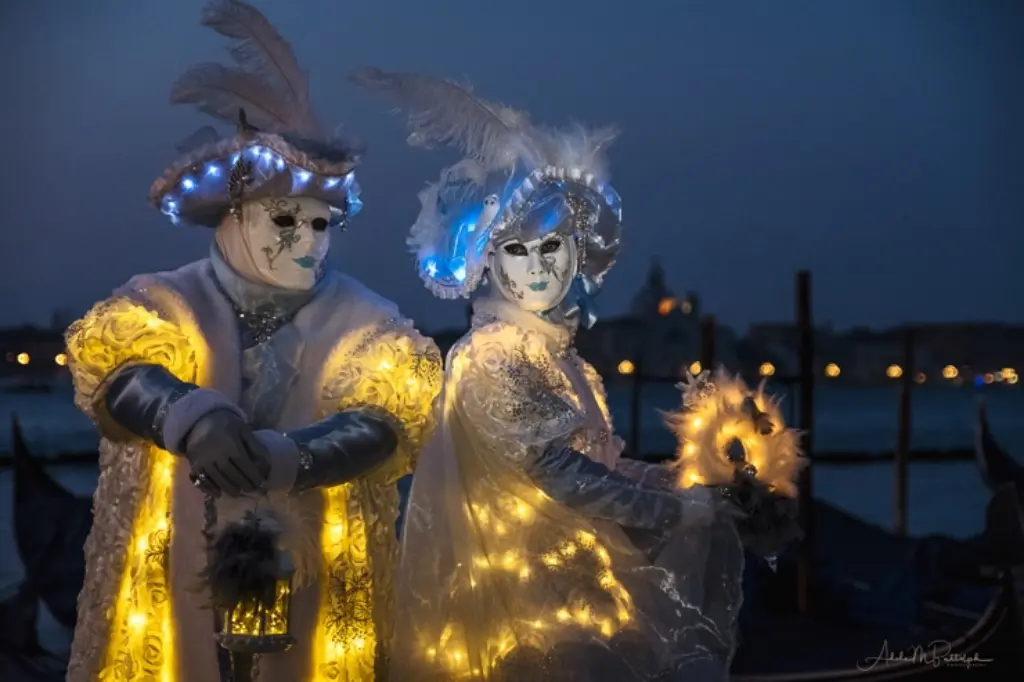
The Origins and Evolution of Carnevale
The roots of the Carnival of Venice stretch back centuries, with some historians suggesting its origins can be traced to ancient Roman festivals like the Saturnalia. These celebrations, characterized by a temporary suspension of social norms and a focus on revelry, laid the groundwork for the festivities we know today.
By the Middle Ages, Venice, a powerful maritime republic, had begun developing its unique version of the carnival. The festival served as a pressure valve, allowing citizens from all walks of life to shed their social identities, engage in playful mockery, and briefly escape the rigid hierarchies of Venetian society. This sense of freedom and anonymity is perhaps the most powerful and enduring legacy of the Venetian Carnival.
The Significance of the Mask
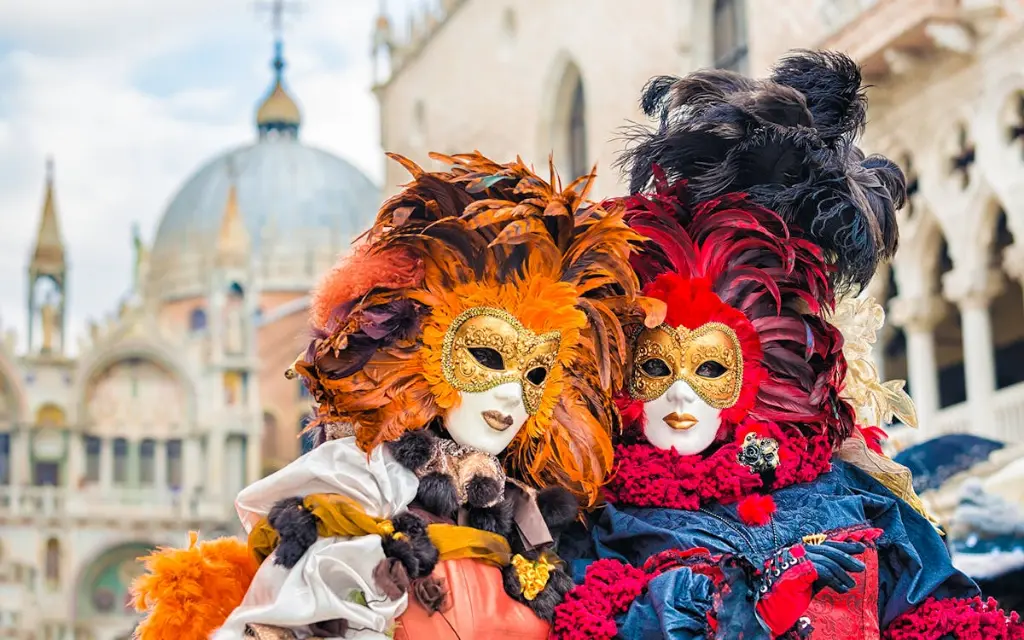
At the heart of the Carnival of Venice lies the mask, far more than a simple disguise. These intricate creations are imbued with symbolism and historical significance. The mask provided a means of leveling social classes, allowing the wealthy to mingle with the poor, the nobles with the commoners, all without fear of judgment or recognition.
This temporary anonymity fostered an atmosphere of equality and intrigue, and became fundamental to the Carnival’s appeal. Masks allowed people to be whoever they wanted for a short period, making for a truly liberating experience. The absence of identity allowed for a freedom of expression rarely seen elsewhere.
Common Venetian Mask Styles
Over the centuries, various styles of Venetian masks have emerged, each with its own distinct personality and history. Here are a few of the most recognizable:
- Bauta: The most iconic Venetian mask. It is characterized by its white, often angular, shape and a protruding ‘beak’ that allowed the wearer to drink and speak without revealing their identity.
- Moretta: This oval mask, typically made of velvet, was worn by women. A small button inside the mask was held in place with the teeth, which made it difficult to speak, thus enhancing the mysterious quality.
- Medico della Peste (Plague Doctor): A distinctive mask with a long, bird-like beak. Originally worn by doctors during the plague, it became a symbolic and slightly sinister element of the Carnival.
- Volto: A simple, white mask that covers the entire face and provides a blank slate, allowing the wearer to project whatever persona they choose.
- Arlecchino and Colombina: Character masks derived from the Commedia dell’Arte, often colorful and playful, representing traditional theatrical archetypes.
The Spectacle of Costumes
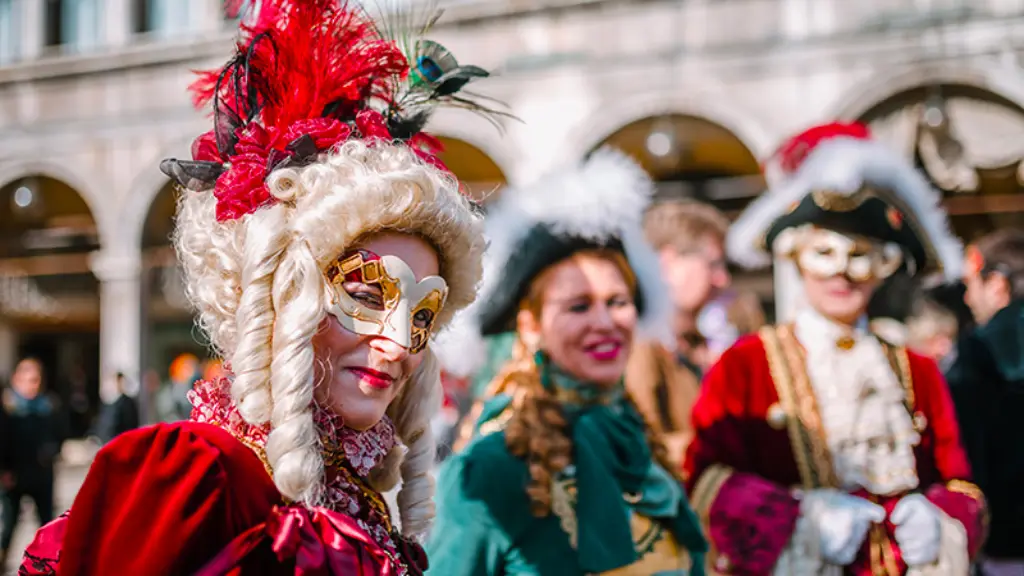
While the mask is a key element, the costumes of the Carnival are equally captivating. Intricate and extravagant, these attire reflect the creativity and skill of the Venetian craftspeople. Many costumes are inspired by the fashions of the 18th century, the golden age of the Carnival, with elaborate ball gowns, powdered wigs, and brocaded coats.
Participants often invest heavily in their ensembles, showcasing their artistry and attention to detail. The result is a visual feast, a dazzling parade of color and style that transforms the city into a living theater.
Beyond the Masks and Costumes
The Carnival experience extends beyond the visual splendor of masks and costumes. The streets and squares of Venice come alive with music, dance, and theatrical performances. Street artists, puppeteers, and musicians contribute to the vibrant atmosphere.
The Volo dell’Angelo (Flight of the Angel), where a costumed performer descends from the Campanile di San Marco, is a highlight for many. Furthermore, the traditional boat parade along the canals adds another layer of spectacle to this incredible event.
While public events and organized parties are part of the modern carnival, it’s the quiet moments, when a masked figure glides silently through the narrow streets, that truly evoke the spirit of the festival.
Experiencing the Carnival Today
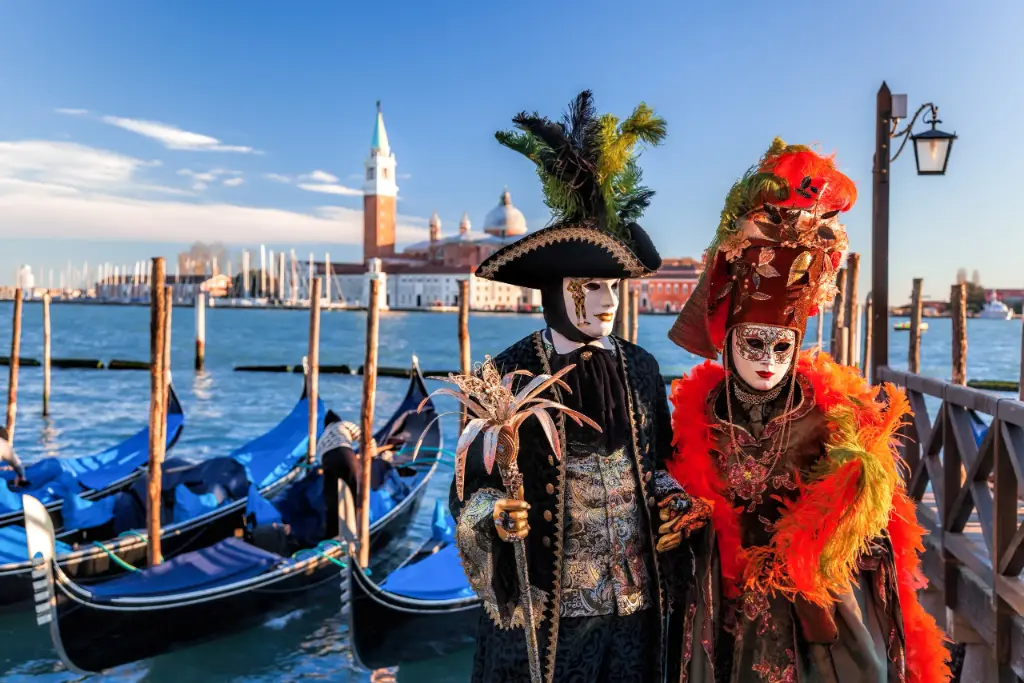
Today, the Carnival of Venice attracts millions of visitors from around the world. While the historical roots of the festival are still celebrated, modern elements have been incorporated, creating a unique blend of tradition and contemporary entertainment. We can observe an evolution of mask designs and costumes, with each year showcasing new creative interpretations.
The festival spans roughly two weeks, ending on Shrove Tuesday (Mardi Gras). During this time, the entire city immerses itself in the festivities, offering something for every visitor, from glamorous balls to quiet strolls through the masked crowds.
Tips for Planning your Carnival Visit
Planning a trip to Venice during Carnival requires some forethought. Here are a few tips to help you make the most of your experience:
- Book Accommodation in Advance: Venice is incredibly popular during Carnival. Securing accommodation well in advance is essential to avoid disappointment.
- Plan Your Activities: Look into the official carnival schedule to see when key events are taking place. This will allow you to prioritize your activities and make the most of your limited time.
- Consider a Costume: While many visitors simply enjoy watching, having a mask or costume can significantly enhance the experience. You can purchase or rent costumes in Venice.
- Be Prepared for Crowds: Expect large crowds, particularly in St. Mark’s Square and other popular areas. Wear comfortable shoes and plan your routes accordingly.
- Embrace the Spirit: Be open to the unique atmosphere of the festival. Immerse yourself in the sights, sounds, and energy of the Carnival and allow yourself to be transported to another world.
We find that being prepared and doing some basic research, will undoubtedly add to your overall enjoyment of the festivities.
The Enduring Appeal of Venetian Carnival
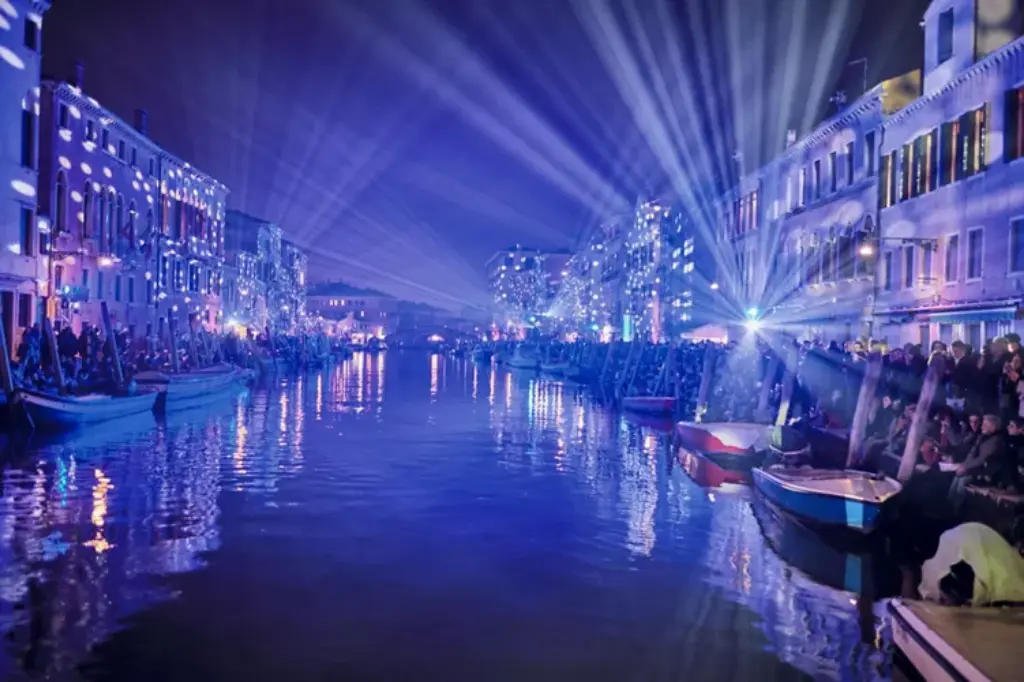
The Carnival of Venice is more than just a festival; it’s an experience that transcends time and culture. The combination of historical significance, artistic expression, and a sense of mystery makes it an unforgettable event. It provides a rare opportunity to witness the intersection of tradition and creativity, where participants and spectators alike are captivated by the magic of Venice.
The ephemeral nature of the event, with its fleeting moments of masked anonymity, only adds to its allure, making us long to return and experience the magic of it all over again. Its enduring appeal lies in its ability to transport us to a world of fantasy and intrigue, where for a brief period, we can experience a world unlike our own.
Frequently Asked Questions (FAQs)
When does the Carnival of Venice take place?
The Carnival of Venice typically begins approximately two weeks before Ash Wednesday (Mardi Gras). The exact dates vary each year, so it’s essential to check the official schedule before planning your trip.
Do I need to wear a mask and costume to enjoy the Carnival?
No, you are not required to wear a mask or costume to enjoy the Carnival. Many visitors attend simply to observe and take in the atmosphere. However, participating by wearing a mask or costume is a great way to immerse yourself fully in the experience.
How crowded does Venice get during Carnival?
Venice becomes extremely crowded during Carnival, with visitors coming from all over the world. Expect to navigate through large crowds, especially in popular areas such as St. Mark’s Square. It’s wise to book accommodation well in advance and to plan your activities strategically to avoid unnecessary stress and maximize your enjoyment.
The Carnival of Venice is more than just a celebration; it’s a living testament to Venice’s rich cultural heritage and a captivating spectacle that continues to enthrall and enchant. From its historical roots in social levelling to the elaborate masks and costumes, the festival offers a profound and magical experience that is unlike anything else.
We encourage you to immerse yourselves in the unique atmosphere and witness firsthand the allure of the Venice Carnival; it’s an experience you’ll never forget. We trust that this detailed guide has provided valuable insights and inspired you to explore this captivating event.
:focal(274x513:275x514)/https://tf-cmsv2-smithsonianmag-media.s3.amazonaws.com/filer_public/64/78/64786b1f-1e02-4484-bb52-e552b47470f6/venice_carnival_4.jpg)
Carnival of Venice: A Journey Through History, Masks, and Mystery
The Carnival of Venice, *Carnevale di Venezia*, stands as one of the most iconic and celebrated festivals in the world. Each year, the enchanting city of Venice transforms into a theatrical stage, brimming with elaborate costumes, masked figures, and a palpable sense of history and magic. This isn’t just a party; it’s a deeply rooted tradition, offering us a glimpse into the rich cultural tapestry of Venice. Join us as we explore the captivating world of the Venetian Carnival, uncovering its history, traditions, and the enduring allure that draws millions of visitors each year.
The Origins and Evolution of Carnevale
The roots of the Carnival of Venice stretch back centuries, with some historians suggesting its origins can be traced to ancient Roman festivals like the Saturnalia. These celebrations, characterized by a temporary suspension of social norms and a focus on revelry, laid the groundwork for the festivities we know today. By the Middle Ages, Venice, a powerful maritime republic, had begun developing its unique version of the carnival. The festival served as a pressure valve, allowing citizens from all walks of life to shed their social identities, engage in playful mockery, and briefly escape the rigid hierarchies of Venetian society. This sense of freedom and anonymity is perhaps the most powerful and enduring legacy of the Venetian Carnival.
The Significance of the Mask

At the heart of the Carnival of Venice lies the mask, far more than a simple disguise. These intricate creations are imbued with symbolism and historical significance. The mask provided a means of leveling social classes, allowing the wealthy to mingle with the poor, the nobles with the commoners, all without fear of judgment or recognition. This temporary anonymity fostered an atmosphere of equality and intrigue, and became fundamental to the Carnival’s appeal. Masks allowed people to be whoever they wanted for a short period, making for a truly liberating experience. The absence of identity allowed for a freedom of expression rarely seen elsewhere.
Common Venetian Mask Styles
Over the centuries, various styles of Venetian masks have emerged, each with its own distinct personality and history. Here are a few of the most recognizable:
- Bauta: The most iconic Venetian mask. It is characterized by its white, often angular, shape and a protruding ‘beak’ that allowed the wearer to drink and speak without revealing their identity.
- Moretta: This oval mask, typically made of velvet, was worn by women. A small button inside the mask was held in place with the teeth, which made it difficult to speak, thus enhancing the mysterious quality.
- Medico della Peste (Plague Doctor): A distinctive mask with a long, bird-like beak. Originally worn by doctors during the plague, it became a symbolic and slightly sinister element of the Carnival.
- Volto: A simple, white mask that covers the entire face and provides a blank slate, allowing the wearer to project whatever persona they choose.
- Arlecchino and Colombina: Character masks derived from the *Commedia dell’Arte*, often colorful and playful, representing traditional theatrical archetypes.
The Spectacle of Costumes

While the mask is a key element, the costumes of the Carnival are equally captivating. Intricate and extravagant, these attire reflect the creativity and skill of the Venetian craftspeople. Many costumes are inspired by the fashions of the 18th century, the golden age of the Carnival, with elaborate ball gowns, powdered wigs, and brocaded coats. Participants often invest heavily in their ensembles, showcasing their artistry and attention to detail. The result is a visual feast, a dazzling parade of color and style that transforms the city into a living theater.
Beyond the Masks and Costumes
The Carnival experience extends beyond the visual splendor of masks and costumes. The streets and squares of Venice come alive with music, dance, and theatrical performances. Street artists, puppeteers, and musicians contribute to the vibrant atmosphere. The *Volo dell’Angelo* (Flight of the Angel), where a costumed performer descends from the Campanile di San Marco, is a highlight for many. Furthermore, the traditional boat parade along the canals adds another layer of spectacle to this incredible event. While public events and organized parties are part of the modern carnival, it’s the quiet moments, when a masked figure glides silently through the narrow streets, that truly evoke the spirit of the festival.
Experiencing the Carnival Today
:max_bytes(150000):strip_icc()/GettyImages-547304157-5b325d8c46e0fb00377e74c9.jpg)
Today, the Carnival of Venice attracts millions of visitors from around the world. While the historical roots of the festival are still celebrated, modern elements have been incorporated, creating a unique blend of tradition and contemporary entertainment. We can observe an evolution of mask designs and costumes, with each year showcasing new creative interpretations. The festival spans roughly two weeks, ending on Shrove Tuesday (Mardi Gras). During this time, the entire city immerses itself in the festivities, offering something for every visitor, from glamorous balls to quiet strolls through the masked crowds.
Tips for Planning your Carnival Visit
Planning a trip to Venice during Carnival requires some forethought. Here are a few tips to help you make the most of your experience:
- Book Accommodation in Advance: Venice is incredibly popular during Carnival. Securing accommodation well in advance is essential to avoid disappointment.
- Plan Your Activities: Look into the official carnival schedule to see when key events are taking place. This will allow you to prioritize your activities and make the most of your limited time.
- Consider a Costume: While many visitors simply enjoy watching, having a mask or costume can significantly enhance the experience. You can purchase or rent costumes in Venice.
- Be Prepared for Crowds: Expect large crowds, particularly in St. Mark’s Square and other popular areas. Wear comfortable shoes and plan your routes accordingly.
- Embrace the Spirit: Be open to the unique atmosphere of the festival. Immerse yourself in the sights, sounds, and energy of the Carnival and allow yourself to be transported to another world.
We find that being prepared and doing some basic research, will undoubtedly add to your overall enjoyment of the festivities.
The Enduring Appeal of Venetian Carnival

The Carnival of Venice is more than just a festival; it’s an experience that transcends time and culture. The combination of historical significance, artistic expression, and a sense of mystery makes it an unforgettable event. It provides a rare opportunity to witness the intersection of tradition and creativity, where participants and spectators alike are captivated by the magic of Venice. The ephemeral nature of the event, with its fleeting moments of masked anonymity, only adds to its allure, making us long to return and experience the magic of it all over again. Its enduring appeal lies in its ability to transport us to a world of fantasy and intrigue, where for a brief period, we can experience a world unlike our own.
Frequently Asked Questions (FAQs)
When does the Carnival of Venice take place?
The Carnival of Venice typically begins approximately two weeks before Ash Wednesday (Mardi Gras). The exact dates vary each year, so it’s essential to check the official schedule before planning your trip.
Do I need to wear a mask and costume to enjoy the Carnival?
No, you are not required to wear a mask or costume to enjoy the Carnival. Many visitors attend simply to observe and take in the atmosphere. However, participating by wearing a mask or costume is a great way to immerse yourself fully in the experience.
How crowded does Venice get during Carnival?
Venice becomes extremely crowded during Carnival, with visitors coming from all over the world. Expect to navigate through large crowds, especially in popular areas such as St. Mark’s Square. It’s wise to book accommodation well in advance and to plan your activities strategically to avoid unnecessary stress and maximize your enjoyment.
Conclusion
The *Carnival of Venice* is more than just a celebration; it’s a living testament to Venice’s rich cultural heritage and a captivating spectacle that continues to enthrall and enchant. From its historical roots in social levelling to the elaborate masks and costumes, the festival offers a profound and magical experience that is unlike anything else. We encourage you to immerse yourselves in the unique atmosphere and witness firsthand the allure of the Venice Carnival; it’s an experience you’ll never forget. We trust that this detailed guide has provided valuable insights and inspired you to explore this captivating event.
